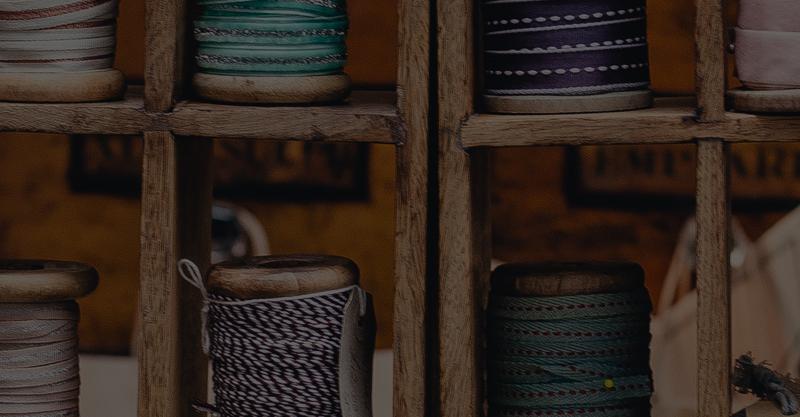- No products in the cart.
Four Ways to Apply Decorative Trim to Fabric
22
Jun
Custom home decor and clothing can be incredibly expensive, but you can find a less expensive alternative to creating customized pieces by doing it yourself. Adding decorative trim to a throw pillow or skirt can quickly elevate it’s look.
By learning how to easily and properly apply decorative trim to any fabric, you can turn your next design obsession into a DIY project using the right tools and techniques. Whether you're starting from scratch or upcycling materials, sewing craft projects can be enjoyable and rewarding.
In this guide, we will teach you everything you need to know about applying decorative trim to fabrics using a variety of different tools and methods:
Sewing machine
Hand stitch
Fabric adhesive
Fusible fabric tape
Whether you’re an advanced seamstress or a novice DIY’er looking for their next sewing craft project, these tips will be sure to come in handy. At Trimplace, we have all kinds of decorative trims and braids, including even the most dainty and delicate lace trim fabrics.
Using a Sewing Machine for Decorative Trim
One of the quickest ways to crank out large-scale sewing projects is by using a sewing machine. Sewing machines are also very handy for small DIY craft projects as well, like adding decorative trim to home décor, clothing, and more! Working with decorative trim is a little bit different then adhering two pieces of fabric together.
Follow this step-by-step guide to applying trim with a sewing machine:
Step 1: Align the trim on the desired fabric so that the fabric surface is facing the backside
Step 2: Secure the trim in place with sewing pins along the edges
Step 3: Using an open toe foot, begin machine stitching with a matching thread
Step 4: Remove any pins before the trim and fabric are fused with thread
Step 5: Cut excess thread after the trim is sewn
These general guidelines can help you apply a variety of decorative trims to fabric using a sewing machine. Depending on your decorative trim's shape, size, and material, you may need to make minor tweaks to this process. When you begin a sewing craft project, assess your materials to determine if using a sewing machine is the right path for the types of materials you are using.
To refresh your sewing knowledge, check out this guide to sewing decorative trims.
Applying Trim with Hand Stitching
Hand stitching is an easy skill to learn for craft projects and everyday practicality. However, in some cases, the delicacy of your fabric may lead you to avoid a sewing machine altogether. Lace trim is a prime example of a delicate fabric that a sewing machine can quickly destroy. Because of the thin, lightweight, and open-weave nature of lace trim, hand stitching can be an excellent alternative to a sewing machine for adhering this trim to another fabric.
A delicate trim material may run the risk of undergoing damage from the pulses of a sewing machine, causing the fabric to be unusable. Therefore, when working with delicate fabrics such as lace trim, we recommend skipping the sewing machine and opting for a hand stitch instead. You can use a small whip stitch or a straight stitch to sew your lace trim onto a piece of fabric by hand.
No-Sew Methods for Adhering Trim
You don't need a needle and thread or even a sewing machine to start your next fabric craft project. Instead, you can utilize several no-sew methods to apply decorative trim to fabric, such as fabric adhesive and fusible tape.
While each method is slightly different, the general application is quite similar. Using fabric glue adhesive, apply the adhesive directly to the trim. Next, apply the trim and glue to the desired fabric to place it in the precise desired location. Finally, use sewing pins to keep trim in place while the glue sets and dries completely.
You will use the same process with fusible tape, except you will take your fabric and pinned trim to an ironing board to use a heat source, like an iron, to activate the fusible tape.
Don’t let delicate fabrics scare you - check out these creative ways to use lace for your next sewing project.

